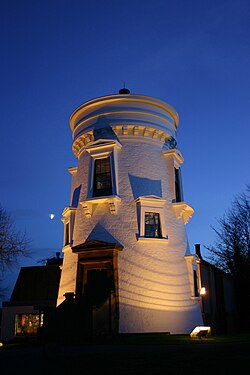
Dumfries is a market town and former royal burgh within the Dumfries and Galloway council area of Scotland. It is located near the mouth of the River Nith into the Solway Firth about 25 miles (40 km) by road from the Anglo-Scottish border and just 15 miles (24 km) away from Cumbria by air. Dumfries is the county town of the historic county of Dumfriesshire. Dumfries is nicknamed Queen of the South. This is also the name of the town's professional football club. People from Dumfries are known colloquially in Scots language as Doonhamers.
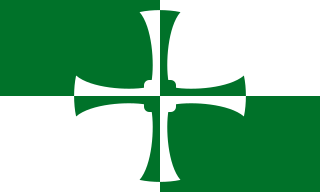
Kirkcudbrightshire, or the County of Kirkcudbright or the Stewartry of Kirkcudbright, is a historic county, registration county and lieutenancy area in the informal Galloway area of south-western Scotland. For local government purposes, it forms part of the wider Dumfries and Galloway council area of which it forms a committee area under the name of the Stewartry.

Skull Tower is a stone structure embedded with human skulls located in Niš, Serbia. It was constructed by the Ottoman Empire following the Battle of Čegar of May 1809, during the First Serbian Uprising. During the battle, Serbian rebels under the command of Stevan Sinđelić were surrounded by the Ottomans on Čegar Hill, near Niš. Knowing that he and his fighters would be impaled if captured, Sinđelić detonated a powder magazine within the rebel entrenchment, killing himself, his subordinates and the encroaching Ottoman soldiers. The governor of the Rumelia Eyalet, Hurshid Pasha, ordered that a tower be made from the skulls of the fallen rebels. The tower is 4.5 metres (15 ft) high, and originally contained 952 skulls embedded on four sides in 14 rows.
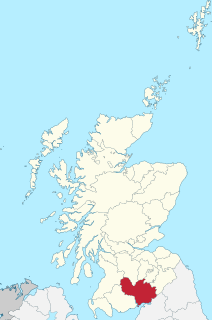
Dumfriesshire or the County of Dumfries is a historic county, registration county and lieutenancy area of southern Scotland.
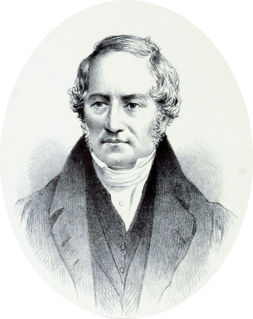
Henry Duncan FRSE was a Scottish minister, geologist and social reformer. The minister of Ruthwell in Dumfriesshire, he founded the world's first mutual savings bank that would eventually form part of the Trustee Savings Bank. He served as Moderator of the General Assembly of the Church of Scotland in 1839. At the Disruption has left the Church of Scotland and sided with the Free Church. He was also a publisher, a philanthropist and an author, writing novels as well as works of science and religion.
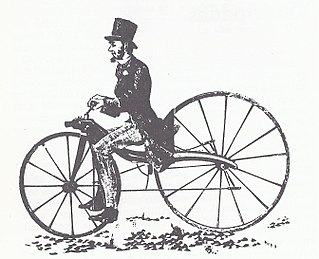
Kirkpatrick Macmillan was a Scottish blacksmith. He is generally credited with inventing the pedal driven bicycle.

Annan is a town and former royal burgh in Dumfries and Galloway, south-west Scotland. Historically part of Dumfriesshire, its public buildings include Annan Academy, of which the writer Thomas Carlyle was a pupil, and a Georgian building now known as "Bridge House". The Town Hall was built in Victorian style in 1878, using the local sandstone. Annan also features a Historic Resources Centre. In Port Street, some of the windows remain blocked up to avoid paying the window tax.

Camera Obscura & World of Illusions is a tourist attraction located in Outlook Tower on the Castlehill section of the Royal Mile close to Edinburgh Castle. The original attraction was founded by entrepreneur Maria Theresa Short in 1835 and was exhibited on Calton Hill. Outlook Tower has been a museum since the late 1890s and is currently home to many interactive exhibits, including the original Camera Obscura.
Werner Friedrich Theodor Kissling was an amateur ethnographer and amateur photographer.
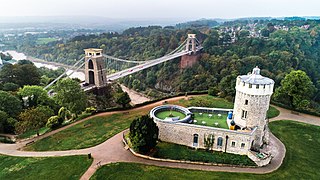
Clifton Observatory is a former mill, now used as an observatory, located on Clifton Down, close to the Clifton Suspension Bridge, Bristol, England.
Glasserton is a civil parish in Dumfries and Galloway, south-west Scotland. It is on the Machars peninsula, in the traditional county of Wigtownshire. The parish is about 8 miles (13 km) in length, varying in breadth from 1 to 3 miles, and contains 13,477 acres (54.54 km2).
Annan Academy is a secondary school in Annan, in Dumfries and Galloway, Scotland. The present school is the result of an amalgamation in 1921 of the original Annan Academy and Greenknowe Public School, although its history goes back to the 17th century.

Bonewaldesthorne's Tower is a medieval structure on the northwest corner of the city walls of Chester, Cheshire, England; it is attached by a spur wall to the Water Tower. It is recorded in the National Heritage List for England as a designated Grade I listed building. Built as part of Chester's defensive system, it was used in the 19th and early 20th centuries as a museum.

William West (1801–61) was an English oil painter and watercolourist who was a member of the Bristol School of artists. He was also the builder of the Clifton Observatory at Clifton Down, Bristol.
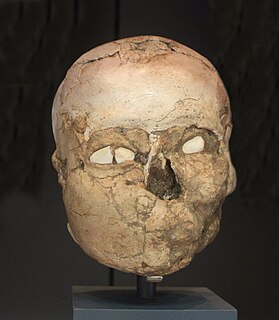
Plastered human skulls are human skulls covered in layers of plaster, typically found in the ancient Levant, most notably around the modern Palestinian city of Jericho, between 9,000 and 6,000 BC, in the Pre-Pottery Neolithic B period. They represent some of the oldest forms of art in the Middle East and demonstrate that the prehistoric population took great care in burying their ancestors below their homes. The skulls denote some of the earliest sculptural examples of portraiture in the history of art.
Events from the year 1836 in Scotland.

Dalgarnock, Dalgarno, Dalgarnoc was an ancient parish and a once considerable sized village in the Nithsdale area of Dumfries and Galloway, Scotland, south of Sanquhar and north of Dumfries that enclosed the parish of Closeburn but was annexed to Closeburn in 1606 following the Reformation, separated again in 1648 and finally re-united in 1697, as part of the process that established the Presbyterian Church of Scotland. It was a burgh of regality bordering the River Nith and Cample Water and held a popular market-tryst or fair from medieval times until 1601 when the Earl of Queensberry had them transferred to Thornhill, commemorated in song by Robert Burns, shortly before its demise and now only a remote churchyard remains at a once busy site.

Micah Salt was a tailor and amateur archaeologist from Buxton in Derbyshire.

A statue of Thomas Carlyle by Sir Edgar Boehm stands in Chelsea Embankment Gardens in London. Erected in 1881 and unveiled in 1882, it stands close to 24 Cheyne Row where Carlyle lived for the last 47 years of his life. The statue became a Grade II listed building on 15 April 1969.
